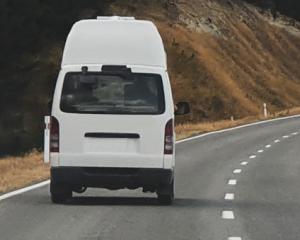
Commissioned by Great South, the Southland Region Post-Covid Scenario Analysis Report was compiled to build on the Covid-19 impact report prepared mid last year.
Great South chief executive Graham Budd said while the economic outlook had initially been poor, the report showed during last year’s Alert Level 3 lockdown, Southland had been less affected overall than the rest of New Zealand, key industries and the primary sector having been able to continue operating.
That was heartening, he said.
However, the impact on the tourism and hospitality sectors needed to be acknowledged.
"An increase in domestic tourism has helped, but in areas like Te Anau and Fiordland that have traditionally relied heavily on international visitors the impact is severe."
Southland deputy mayor Ebel Kremer said the Fiordland area was in its 13th month of struggles, after it was hit by floods in February last year.
Previously, international tourists made up about 80% of the market, he said.
"That market has not come to fruition again because the borders are still closed."
Eleven businesses had closed their doors, and there was a high chance more would follow, he said.
National Party Southland MP Joseph Mooney last week said feedback from tourism providers in Te Anau and Queenstown showed they needed certainty, and a transtasman bubble would help provide that.
Other regional challenges included labour and skills shortages and a housing shortage, which were barriers to full recovery and growth.
Economic consultants Infometrics produced the report. Author Nick Brunsdon said economic activity in most industries was expected to recover by 2025.
At worst, by 2025 Southland would be 70% back to normal economically and in the best-case scenario 100% back to normal.
Mr Budd expected the 70% prediction would be well surpassed given a strong recovery based on export commodity prices and construction.
The report also predicts Southland’s population will increase to between 108,800 and 111,300 — up from the pre-Covid population figure of 102,600.
"Like the rest of New Zealand, we’re finding that a lot of Kiwis who were overseas when Covid hit are returning home. That’s great but attracting skilled migrants into the region will also be essential," Mr Budd said.
The report, which factors in the continued operation of the Tiwai Point aluminum smelter until late 2024, was designed to assist regional decision-making and inform future strategies for Southland.
"In many ways it reinforces our collective focus on economic diversification, carbon emissions and options for alternative land use."











